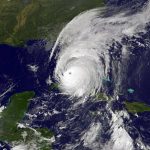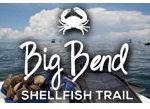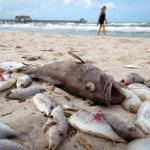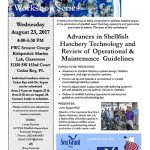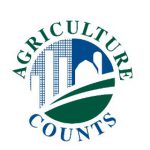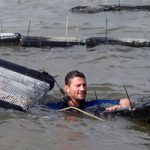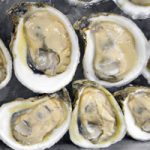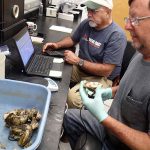
Sampling UF Field Trials
As in the first phase of the demonstration project, oysters were also cultured at the UF experimental lease off Cedar Key in the second phase. On June 7, 2017, diploid and triploid oyster seed were stocked into 14 mm mesh Vexar bags at a density of 150 per bag. The effects of float design (type and bag placement) on oyster production and fouling control were further tested in these field trials. See the June 2017 news article for more information on gear types and management practices evaluated. In addition, two commercially available, biocide-free antifouling coatings were applied to some of


